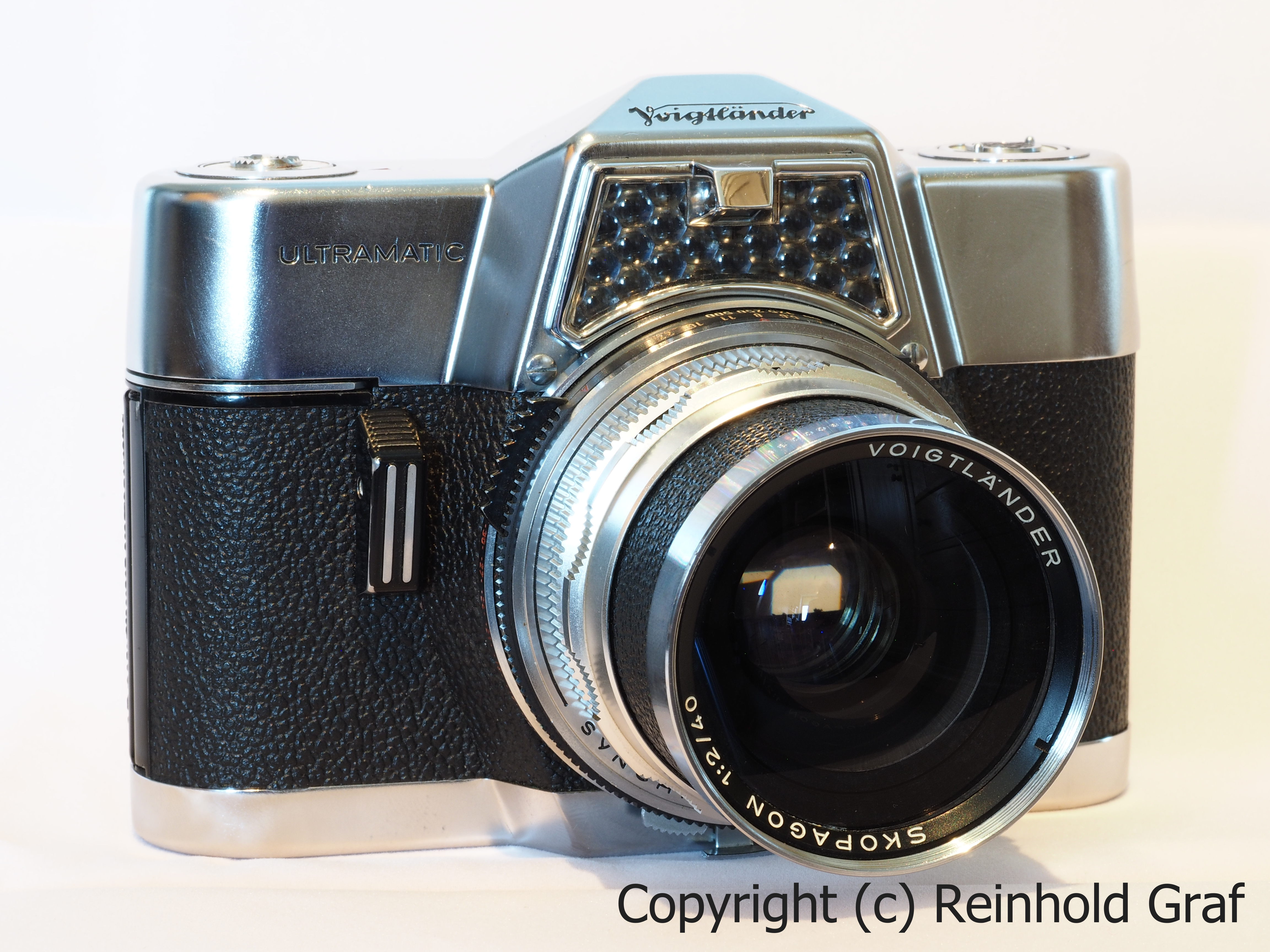Some time ago I was forwarded a pretty old camera by a friend. As it turns out, I now owned a Voigtländer Ultramatic from the 1960s, together with its set-lens, a Voigtländer Skopagon f/2.0 40mm. All this in a beautiful original camera case and a camera system bag with a couple of filters.

There is a wonderful description of this camera available (in German language) from Rolf-Peter Müller on his web page Der Klinterklater, so I see no need to repeat all the details mentioned there. Please check his website.
As mentioned above, my camera/lens set came with a Skopagon f2.0 40mm lens which is in a beautiful condition. The camera looks beautiful with no dings or dents all around.
What is immediately noticeable is the flat top. On the left is the rewind crank, which only jumps up slightly after pressing a locking lever. This rewind crank also serves as a film indicator. On the right, there is only a filter factor correction dial.
On the back, you’ll find the locking lever for the rewind crank on the left, the large and bright viewfinder in the center, and the film transport lever on the right, which does its job as smoothly as butter.
On the bottom you’ll find the down-counting frame counter, which has two positions, one for 20 frames and one for 36 frames.
On the front there is the Selenium Cell Window above the lens mount, the shutter release left of the lens mount and the flash sync port with a switch to change between M, X and V.
Impressive is the DKL-Lens Mount, constructed by Fa. Deckel, München. All lenses for this mount contain a Synchro-Compur Leaf Shutter behind the lens. The mount holds two rings for shutter speed and the aperture setting (reminds me somehow of the OM-Series).
The Ultramatic has an Aperture Priority which works purely mechanical! No electronics, no battery. When selecting the ‘A’-Setting on the Aperture ring, the camera automatically sets the correct aperture. The viewfinder shows the ‘A’ setting, the manually selected speed and the aperture it will choose.
Unfortunately, on my camera, the selenium cell was dead and this means that this Aperture Priority does no longer work – I had to use the camera fully manual.
The lens with its distance setting ring also holds two depth of field indicators, moving while setting the aperture.
All mechanical parts move flawless and smooth, all this after 60 years and I guess my camera sat in its camera bag for decades.
Even without the Aperture Priority working, I’ll gave the camera a try and loaded it with an Ilford HP5 Plus black and white film with its 400 ISO. The metering was done using an old external exposure meter.







My conclusion after shooting one film with this camera:
As some experts wrote, this body shows the most complex mechanics ever built into a camera body. This also means that if it breaks, no one will be available to repair it. This statement was already made during the time the camera was new on the market in the 1960s. This says it all about its high sophisticated mechanical complexity.
Today, besides the dead selenium cell, all knobs and knurls work buttery smooth, and it’s a joy to use this camera.
In case you’d like to comment, it’s appreciated … and maybe, you want to visit my website or my flickr page too.
So long … and thanks for all the fish.

To hike in Bavaria! Wie herrlich!
Hi Jim, nice to see you again!
Hiking and biking – that‘s how life makes sense